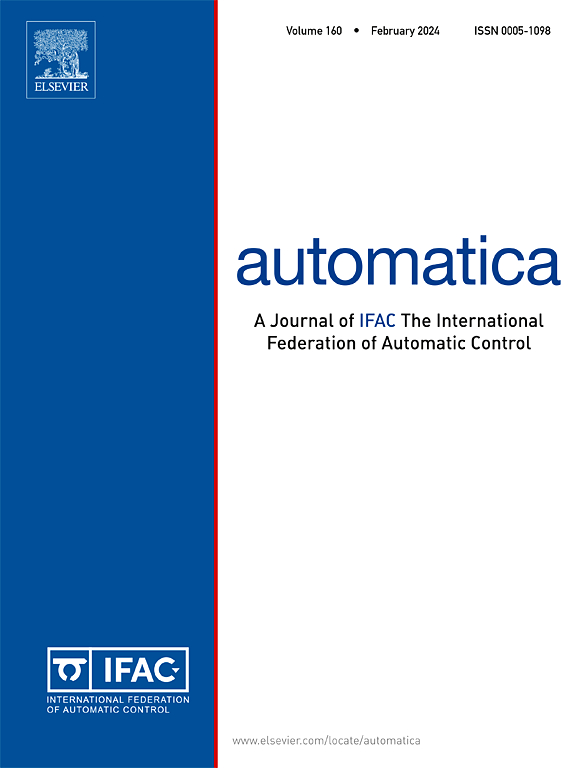Schatten-p 半径基本椭球的最优性标准和优化,以及对带状椭球和椭球的应用
IF 4.8
2区 计算机科学
Q1 AUTOMATION & CONTROL SYSTEMS
引用次数: 0
摘要
在鲁棒状态估计、故障诊断和可达性分析中,优化参数化的等值线或椭圆是一项常见任务。最近的研究将椭圆和等值线统一为基本椭圆,从而支持在实际应用中精确表示更多非线性边界和约束条件。然而,目前还没有适用于一般基本椭圆的最优性标准和优化技术。在本文中,我们为基本椭圆形引入了一种名为 Schatten-p radius 的新优化准则。基于这一标准,我们开发了一套方法,在任意 0< p <∞ 的凸约束条件下最小化 Schatten-p 半径,这也意味着最小化带状椭圆和椭圆体的新工具可用。我们通过几个数值实例证明了 Schatten-p 半径优化的有效性。本文章由计算机程序翻译,如有差异,请以英文原文为准。
Schatten-p radius: Optimality criterion and optimization for basic ellipsotopes with application to zonotopes and ellipsoids
Optimizing a parameterized zonotope or ellipsoid is a common task in robust state estimation, fault diagnosis and reachability analysis. Recent studies have unified ellipsoids and zonotopes into basic ellipsotopes, which support precise representation for more nonlinear boundaries and constraints in practical applications. However, there are currently no available optimality criteria and optimization techniques for general basic ellipsotopes. In this paper, we introduce a novel optimality criterion called Schatten-p radius for basic ellipsotopes. Based on this criterion, we develop a set of methods to minimize the Schatten-p radius under convex constraints for arbitrary p , which also implies new available tools for minimizing zonotopes and ellipsoids. The effectiveness of the Schatten-p radius optimization is demonstrated on several numerical examples.
求助全文
通过发布文献求助,成功后即可免费获取论文全文。
去求助
来源期刊

Automatica
工程技术-工程:电子与电气
CiteScore
10.70
自引率
7.80%
发文量
617
审稿时长
5 months
期刊介绍:
Automatica is a leading archival publication in the field of systems and control. The field encompasses today a broad set of areas and topics, and is thriving not only within itself but also in terms of its impact on other fields, such as communications, computers, biology, energy and economics. Since its inception in 1963, Automatica has kept abreast with the evolution of the field over the years, and has emerged as a leading publication driving the trends in the field.
After being founded in 1963, Automatica became a journal of the International Federation of Automatic Control (IFAC) in 1969. It features a characteristic blend of theoretical and applied papers of archival, lasting value, reporting cutting edge research results by authors across the globe. It features articles in distinct categories, including regular, brief and survey papers, technical communiqués, correspondence items, as well as reviews on published books of interest to the readership. It occasionally publishes special issues on emerging new topics or established mature topics of interest to a broad audience.
Automatica solicits original high-quality contributions in all the categories listed above, and in all areas of systems and control interpreted in a broad sense and evolving constantly. They may be submitted directly to a subject editor or to the Editor-in-Chief if not sure about the subject area. Editorial procedures in place assure careful, fair, and prompt handling of all submitted articles. Accepted papers appear in the journal in the shortest time feasible given production time constraints.
 求助内容:
求助内容: 应助结果提醒方式:
应助结果提醒方式:


